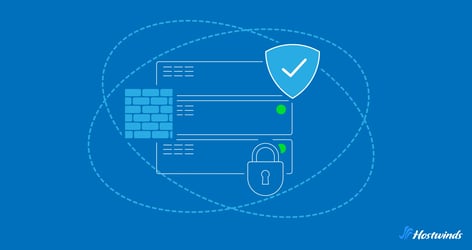Hostwinds Blog
Search results for:

What is Server Hardening & Why it Matters
by: Hostwinds Team / May 7, 2025
If you're running a website, managing applications, or hosting anything online, your server is doing a lot of heavy lifting behind the scenes. But it's also a target. That's where server hardening comes in—it's one of the smartest ways to make sure your server is better protected from the start.
In this post, we'll walk through what server hardening is, why it's worth your time, and what you can do to tighten things up without going overboard.
What Does "Server Hardening" Mean?
Server hardening is all about reducing risk by closing off gaps that could be used to break into your system. That means removing things you don't use, limiting access, keeping software up to date, and tightening security settings.
To put it simply: if your server were a building, hardening would be like locking all the doors, adding security cameras, and taking out anything that doesn't belong. You're making it harder for anything—or anyone—that shouldn't be there to get in.
This process applies whether you're using a web server, database, email server, or something else entirely. And depending on your setup, the steps might vary a bit.
Why Server Hardening is Important
Hardening your server isn't just about feeling safe—it helps protect your data, your site's performance, and your reputation. Let's look at some real reasons it matters.
1. You Reduce Risk Right Away
Every unused port or outdated app is one more thing that could be taken advantage of. Disabling what you don't need cuts down on opportunities for an attacker to get in.
2. It Helps You Stay in Control
Using stronger access rules, setting up firewalls, and managing user permissions makes it a lot harder for someone to slip in unnoticed—or for someone with access to do more than they should.
Not sure where access controls fit in? Take a quick look at this breakdown of authentication vs. authorization—it's a helpful reminder of the difference between proving who you are and deciding what you're allowed to do.
3. You're Better Prepared to Protect Data
If your server holds customer details, payment info, or anything private, keeping that data safe is just good business.
If you're on a shared hosting plan, you're not on your own—this guide on securing your website on a shared hosting plan covers smart ways to lock things down without needing full control of the server.
4. Your Server Runs Cleaner and Faster
Getting rid of software and services you don't need frees up system resources and cuts down on conflicts. That means better uptime, fewer bugs, and faster performance.
5. It Keeps You in Good Standing
If your industry has specific data privacy or security rules, server hardening can help you stay compliant and avoid unwanted surprises later.
Running your own VPS? Here's a step-by-step look at how to secure your VPS hosting environment, including helpful reminders for setting up firewalls, SSH keys, and backups.
What to Focus On
Hardening a server doesn't have to be overwhelming. These key areas are a good place to start:
Access Controls
- Set strong passwords (and never reuse them)
- Disable root login and use SSH key authentication
- Keep user permissions minimal—only give access to what's necessary
- Enable two-factor authentication when available
Keep Things Updated
- Apply security patches and updates regularly
- Uninstall old software you don't need anymore
- Use long-term support versions of operating systems when possible
Lock Down the Network
- Check open ports and shut off any that don't need to be open
- Use a firewall to limit incoming traffic
- Stick with secure file transfer tools—this comparison of SFTP vs FTPS can help you pick the right one
Check Your Apps and Services
- Don't install anything you're not actively using
- Go through your server configuration files to make sure they're not using default settings
- Running WordPress? These WordPress security hardening tips are a good reference
Keep an Eye on What's Happening
- Turn on logging for important services
- Review those logs regularly
- Use monitoring tools to alert you if something seems off
Encrypt Your Connections
- Use SSH instead of older, less secure options like Telnet
- Set up and force HTTPS by using TLS/SSL certificates
- Avoid using outdated protocols like SSL 2.0 and 3.0
If you're looking to protect internal traffic even further, you might consider setting up a proxy server or using a VPN, depending on how your server is accessed.
Keep It Going
Hardening isn't something you do once and forget. Like all things in tech, it's a moving target. Here's how to keep your setup secure over time:
- Run regular scans and security checks
- Review user accounts and disable any that aren't in use
- Check logs for new issues
- Stay current with system updates
- Revisit your security settings every few months
For broader tips on what else you can do, this article on web hosting security best practices covers good habits that apply whether you're managing one website or many.
Wrapping Up
Server hardening might sound technical, but at its core, it's about reducing risk and keeping things running smoothly. The more you take control of what's running on your server—and who can access it—the less likely you are to run into issues later.
And whether you're managing a VPS, using shared hosting, or just learning the ropes, a little time spent hardening your server can go a long way.
Written by Hostwinds Team / May 7, 2025
